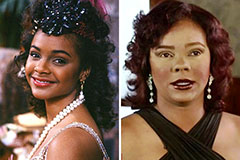Subcultures often utilize garb codes as a means of communication. These looks can range from the vibrant to the subtle, expressing the group's ideologies. Adopting a particular aesthetic can create a sense of belonging among members, while also challenging mainstream norms.
- Many subcultures even develop their own distinctive terminology to describe different styles within their scene.
The Art of Dressing for Success
Cultivating a polished look is paramount in today's competitive landscape. While skills and experience are undeniably essential, the way you present yourself through attire can significantly influence judgments. Dressing for success is more than just following fashion trends; it's about choosing outfits which align with your profession and communicate confidence.
- Choose classic, well-fitted pieces that transcend fleeting trends.
- Pay attention to small touches like ironing your clothes and ensuring your shoes are polished.
- Customize your attire to the specific environment you'll be in.
Remember, dressing for success is an investment in your future. By making a conscious effort to present yourself professionally, you can get more info make a lasting impression.
From Runway to Reality: Trends in Fashion take
The fashion world is a dynamic landscape constantly transforming, with trends emerging on the runway and quickly making their way into our everyday lives. It season, we're seeing a blend of classic silhouettes with eye-catching colors and unique textures. From draped gowns to fitted suits, designers are pushing the boundaries of style, inspiring us to try new looks and express ourselves creatively. Whether you're a fashion aficionado or simply looking for ways to revamp your wardrobe, there are abundant trends to explore.
- Eye-catching details
- Ethical textiles
- Nostalgic styles
A Fashionable Voyage Through Time
From the roaring twenties to the disco era, dresses have reflected the changing social norms, cultural influences, and technological advancements of each decade. {In the early twentieth century, women embraced the flowing silhouette|The flapper dress reigned supreme in the 1920s|Hemlines rose dramatically|, while the post-war era saw a turn towards more classic designs.
- Fabrics like silk, satin, and velvet were often used for evening wear.
- {From romantic ball gowns to everyday sundresses, the dress has remained a staple in women's wardrobes throughout history.|The diversity of styles available today is a testament to the enduring power and versatility of this classic garment.
- Exploring the history of dresses offers a fascinating glimpse into the past.
Traditional Dress's Cultural Significance
Traditional dress holds a profound significance in society worldwide. It acts as a vivid manifestation of heritage, linking individuals to their roots. Through its intricate designs, traditional dress tells myths about a culture's beliefs, values, and artistic sensibilities.
The utilization of traditional dress commonly occurs on special occasions, such as weddings, rituals, and spiritual gatherings. Such events provide opportunities for people to commemorate their national heritage and reinforce a sense community.
Furthermore, traditional dress holds a essential part in the continuation of cultural identity. By passing down traditional clothing styles through generations, societies maintain that their cultural traditions continue alive and flourishing.
Sustainable Style: Ethical Choices in Fashion
The clothing business has a significant effect on the environment and people. Embracing ethical clothing choices allows us to minimize our footprint while championing fair labor practices and responsible sourcing. By choosing garments made from organic materials and supporting brands that prioritize fairness, we can contribute to change in the textile sector.
- Consider buying vintage clothing to minimize demand for new production.
- Select durable and multifunctional pieces that will last longer.
- Research the brands you support and their policies regarding sustainability and ethics.
 Luke Perry Then & Now!
Luke Perry Then & Now! Lark Voorhies Then & Now!
Lark Voorhies Then & Now! Val Kilmer Then & Now!
Val Kilmer Then & Now! Heath Ledger Then & Now!
Heath Ledger Then & Now! Michael Fishman Then & Now!
Michael Fishman Then & Now!